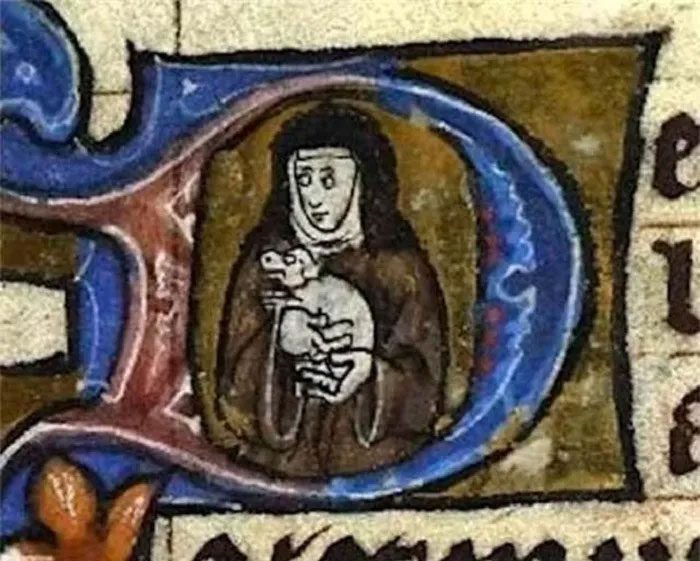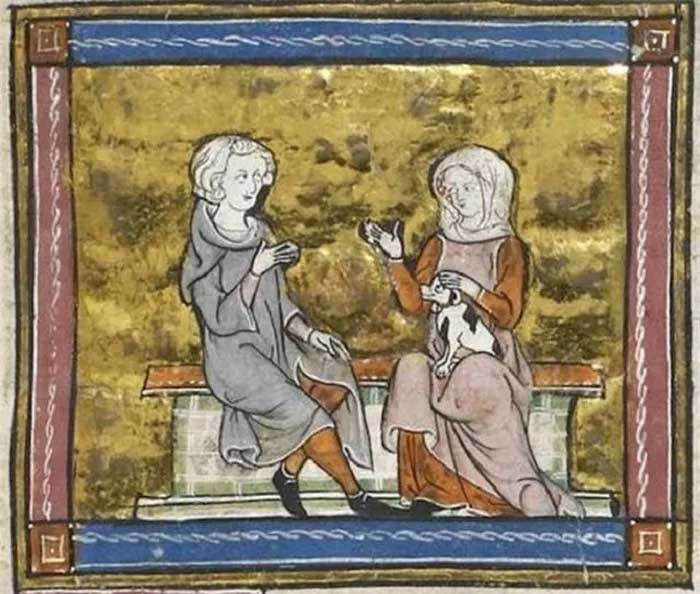In the Medieval period, dogs were not only seen as loyal companions but also symbols of power, wealth, and high social status.
During this time, most dogs had jobs. In his book De Canibus, the 16th-century English physician and scholar John Caius described a hierarchy of dogs classified primarily by their roles within human society.

A dog with a sharp collar and a hunting dog on a long leash from Helmingham Herbal and Bestiary (circa 1500).
At the top of the hierarchy were hunting dogs, described as having “incredible agility” and a keen sense of smell. They could traverse long, winding paths to pursue their prey. The status of dogs in society changed as hunting became a pastime for the nobility, and they were embraced by noble families, particularly the women of the household. Essentially, dogs became symbols of social class.
Caius placed companion dogs, described as “refined, neat, and beautiful,” just below hunting dogs due to their association with the nobility. Notably, the smaller the dog, the more joy it brought to its owner. Medieval nobles also enjoyed keeping dogs as pets.

A nun with her pet dog.
Medieval stories about dogs display a variety of opinions. The Bible depicts dogs as filthy scavengers. However, some legends celebrate their loyalty and intelligence. There’s even a popular tale about the legendary King Garamantes, who was rescued by his loyal dogs after being captured by enemies.
Upon discovering that a child was unharmed (the dog had actually saved it from a venomous snake), they honored the dog as a “martyr” with a proper burial, leading to reverence and the belief that it could perform miraculous healings. Although Stephen’s story aimed to reveal the sins and madness of superstition, it still emphasizes the qualities that medieval people considered special and that distinguished dogs from other animals.

A noblewoman with her pet dog.
According to the Aberdeen Bestiary—a 12th-century manuscript written in English: “No creature is more intelligent than the dog, for the dog has more understanding than other animals; only they recognize their own name and love their masters.” The bond between dogs and loyalty is also reflected in the art of that period, including in relation to marriage. In tomb monuments, images of dogs symbolize the fidelity of a wife to her husband.

Statue of a dog at the feet of Archbishop William Courtenay.
However, in the case of clergy’s tombs, they may evoke the faith of the deceased, such as Archbishop William Courtenay (died in 1396), who was buried at Trinity Chapel, Canterbury Cathedral. In addition to the statue of two angels supporting his knee, there is a statue of a long-eared dog wearing a bell, lying quietly at his feet.

















































